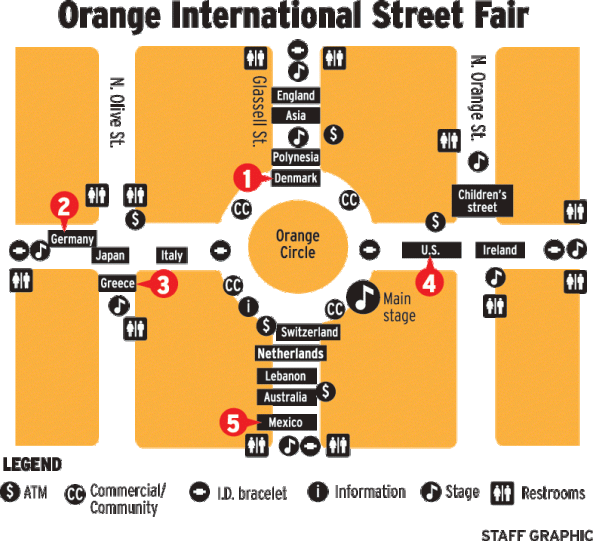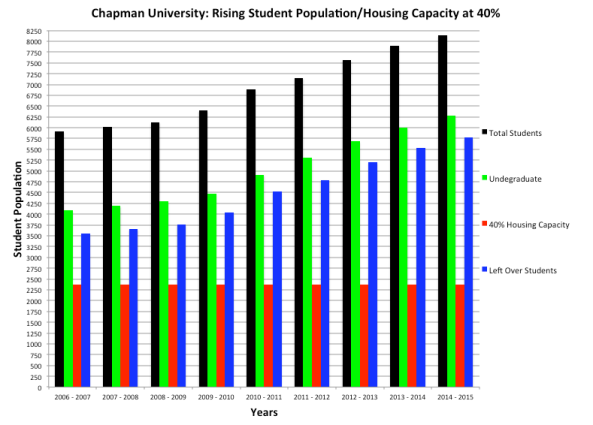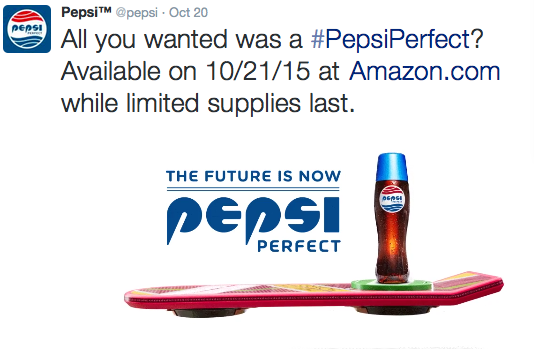Now that Labor Day weekend is here, summer is coming to a conclusion meaning two things: 1, the Orange International Street Fair has started and 2, Chapman University, is back in session causing thousands of college students to once again descend on Orange.
The Orange International Street Fair (OISF) is my favorite weekend of the year, as it is a three-day food fair sampling a verity of delicacies from around the globe. The OISF takes place in Old Towne Orange around the Orange Plaza, which is a historic traffic circle dating back to the 19th century. The Orange circle has four arms that extend out on each side just like an ordinary intersection. However, during the OISF the streets are blocked off, and the four arms are divided up into different countries categorizing the varieties of food and entertainment. When it comes to the OISF, I go all three days and sometimes multiple times. My favorite items are Gyros, funnel cakes, Italian Ice and the lemonade. If you happen to live in the Orange County area, I highly recommend you check it out. Here is an overview of the setup:

With Labor Day weekend upon us, even though it brings the OISF, there is a draw back to this time of year, and it has to do with all the Chapman students coming back to school. Over the past three months, Chapman students have been away on summer vacation causing Orange to go back to its quiet little “small town.” Old Towne Orange used to be this quiet little town for decades, but over the past five years, the town has been going through significant changes as Chapman University has decided to expand. The expansion from when I was a Chapman student (2005 -2011) started out slowly, but in the last five years my alma mater has taken an aggressive stance on their expansion plan; and in May of this year Chapman set out to inject the expansion plan with a large dose of steroids.
When I entered Chapman, there were just barely over 5,000, students throughout the entire university including both undergraduate and graduate programs. However, as the years went by and the better the university got, more and more students began seeking to attend Chapman. As a result of this, the student population has grown from 5,000 to now over 8,000 students. The problem with this is Chapman has not added any more dorm rooms causing the students to infiltrate the surrounding neighborhoods. So when Chapman University unveiled a new plan to add an additional 3,000 students and 17 acres to the campus, the idea was received very poorly by the surrounding neighborhoods.
In order for Chapman to move forward with their proposed expansion plan, the city requires an Environmental Impact Report (EIR) to be conducted to see how the proposed changes will affect the city. When an EIR is planned to take place, there is a 30-day comment period when individuals can write into the city and show their support or opposition to the proposed changes. Even though I am an alumnus of Chapman University, my family and I have not been pleased with how my alma mater has been acting these past years. Therefore my dad and I both sent in letters talking about our issues and concerns. (My letter is below.)
Over the 30-day comment period, more than 100 residents of Orange sent letters in expressing their concerns, problems, and frustrations with how the university has been expanding, but not dealing with the problems that it is causing around town. In addition to letters, residents have also been attending city council meetings to express their distaste for the proposed expansion during public comments. Also, for the first time on August 11th council member Mike Alvarez on an unrelated Chapman building project abstained from voting on giving Chapman a dirt hauling permit and wanted to make a point on the expansion plan by saying, “It seems as though Chapman’s not reaching out the way I would like it to the neighborhoods that are being impacted either by the students or the traffic or the construction, I hope that someone in the higher echelons of Chapman University will see that there’s one councilman that for the first time, in my first eight years in office, and then in my next three, I can’t really support what they’re doing at this time.”
With all the criticism around the expansion plan on Tuesday, August 25th Chapman University announced that they would be halting their application to expand the university and student body. Following the announcement president Jim Doti said, “Chapman University wants to work closely with the city and our neighbors, and we sincerely want to be a good neighbor ourselves, I’ve always felt that when there are challenges, it’s best to meet face to face and talk them out.”
In addition to Jim Doti’s statement, the university pledged that it would create a point of contact for neighbors to talk to, set up a committee with civic leaders to discuss university-community issues, and launch a website to communicate with neighbors. Ultimately, this is a step in the right direction, but we will see if Chapman University follows through with what they say, because the last several years they have been acting like the high school bully. The next year should be interesting to see what happens because right now Chapman is stepping up to the plate, but they are coming back next year with another proposal.
***
To City Council Members:
My name is Trent McGee, and I was at the Chapman Public Scoping Meeting, on May 27. The following letter is in regards to my concerns/problems on Chapman University Specific Plan Amendment No. 7. However, before I go into those concerns/problems let me tell you a little about myself.
In 2005, I was accepted into Chapman University’s Dodge College of Film and Media Arts, where I was to study Film Production. My family and I at this time lived in Irvine, therefore my parents wanted to move to the Orange area in order for me to try and get the “college experience” as I am a (C1, C2) quadriplegic.
As we began looking in the Orange area for a place to live, we explored all our options from Villa Park, Orange Park Acres, Orange Hill and the Old Towne Orange area (OTO). We eventually, settled on buying a house in the OTO area on North California Street, a half-mile from Chapman. What we liked about OTO was the sense of community and “small town” feel.
We have lived in the OTO area for eight years now, and we truly have enjoyed our time here, but in the last three years, because Chapman has decided to expand without adding more student housing, it is beginning to cause the immediate neighborhoods to become problematic. For instance, we have been inundated with six (6) houses that currently are being rented to Chapman students. One of those six was remodeled to add six bedrooms to accommodate even more renters.
The problems are mainly two: “real estate investors,” (many from outside of Orange) noticed the issue and began buying up property in the immediate area in order to rent bedrooms out to students. This has begun breaking up the established “family neighborhoods” changing the Orange “small town” feel. Neighborhoods today are dealing with a student component that changes year-to-year and sometime between semesters. The traffic, noise, parties, and lack of respect this transient and disconnected population has had on neighborhoods is that many long-term residences are beginning to move away, which fuels the investor market.
When I entered Chapman (2005) there was a little over 5,000 students, and at the time they could only house 40% of their students. Now, there are over 8,000 students, and they have not added any more dorm rooms. Chapman will argue Panther Village was created to house more students, but in reality, it did nothing to fix the problems and really was just a facade to make it look like Chapman actually cared.
If you spend some time on Chapman’s website then you know such terms like “morals” and “ethics” are commonly used in describing what the university wants to teach their students. For instance, Chapman’s Mission Statement is: “To provide personalized education of distinction that leads to inquiring, ethical and productive lives as global citizens.” Also, under the “university code of ethics,” the 2nd bullet is: “Integrity: We encourage individuals to articulate a responsible moral vision. We strive to act responsibly, accepting accountability for our conduct and supporting the responsible actions of others.”
I think Chapman University’s current thinking regarding dumping thousands of students in the city of Orange is not “ethical” and that they are acting in an “immoral vision” in how they are not being “responsible” and “accepting accountability” for “their conduct” or “their students” that are affecting “our community.”
If Chapman University actually moves forward with Specific Plan Amendment No. 7, OTO will be gone forever, turning a once quaint town into nothing, but rental property. In September of 2013, when Chapman hosted a neighbor-to-neighbor meeting they explained that they were going to stop at 8,500 students. Well, as time past obviously the plans set in place changed.
Reading Specific Plan Amendment No. 7, there seems to be a little secrecy/vagueness around what Chapman is actually going do when it comes to housing 11,650 students. For instance, in Amendment No. 7, it stats:
- Additional student housing, including new student housing replacing the Davis Apartments, Davis Community Center, Harris Apartments, and Morlan Hall, which are located on-campus.
- Addition of the Panther Village site (located at 3101 West Chapman Avenue).
I mean what exactly do these two statements mean? Because right now Chapman only has enough rooms to house 40% of their students and the buildings mentioned are fully occupied. Is Chapman going to knock down these existing buildings and replace them with more units that will adequately house a significant portion of their students?
These are legitimate and serious questions that need to be answered in the Environment Impact Report (EIR) because if the university wants to raise their student enrollment, then they should be forced to accommodate those needs, so it does not affect you and me.
In addition to the secrecy/vagueness of student housing, for a university that brags about “ethics” and morals,” they are not being very forthcoming with information. For instance, finding Chapman’s student growth on their website used to be relatively easy to find. However, now it is almost like finding a needle in a haystack, and they only keep records for the last five years now. Thank goodness over the past several years I have been keeping track of the progression, which you see in my graph:

The city of Orange was not built to accommodate a large university. Chapman has been in the city of Orange for over 50 years, and it has not been a problem until the last 10 years. I do not know the reason behind the sudden need to expand, expand, and expand. Chapman used to be proud that they were a small private college and all they wanted was to provide a well-rounded education. This was one of the main reasons that I was interested in attending Chapman. However, Jim Doti and the Chapman executives running the school today, seem to have gotten the smell of money, and that is the only thing they are thinking about. It is sad and depressing that my alma mater is changing from the Chapman University I once knew and loved.
So, please help me save Old Towne Orange by stopping the Chapman Specific Plan Amendment No. 7.
Thank you for your time a concerned citizen.
Trent McGee




